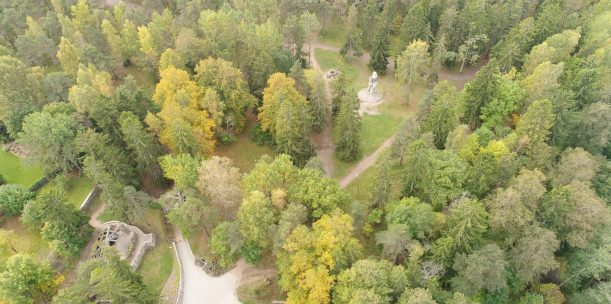One hundred years ago, the areas of Nõmme and Mustamäe were covered by a forest belonging to Jälgimäe Manor, which appeared as blue when looking from Tallinn. This is why Mustamäe was called ‘Blue Mountains’ at the time. In 1870, the Tallinn-Paldiski railway line was built through the forest. City dwellers, who went to rest in the nature, stepped off the train at the stop on the 7th verst. The stop was named ‘Nõmme’ after the nearby Nõmme tavern. Nikolai von Glehn, the landlord of Jälgimäe Manor, built a castle as his summer resort near the railway stop. It was completed in 1886. Soon, Nõmme, which was a resort for the townspeople, became a borough. In 1926 Nõmme received town privileges. In 1940, Nõmme merged with the city of Tallinn.
The new district of Mustamäe was built on a dune plain in the 1960s. It was designed in accordance with standard projects which were assembled into similar microregions.
